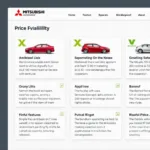Do you suspect your car is low on coolant? This is something you shouldn’t ignore! Insufficient coolant can have serious consequences for your engine, potentially leading to costly repairs. In this article, we’ll cover everything you need to know about the effects of low coolant and how you can protect your engine.
What Happens When Your Coolant Level Is Low?
Coolant, also known as antifreeze, plays a crucial role in keeping your engine within its optimal temperature range. It absorbs the heat generated by the engine and transfers it to the surroundings via the radiator. When there isn’t enough coolant, the heat cannot be effectively dissipated, causing the engine to overheat.
Imagine running a marathon without drinking enough water. Your body would overheat and struggle to perform. Your engine faces a similar struggle without sufficient coolant.
Consequences of Low Coolant:
- Engine Overheating: This is the most common and immediate consequence. An engine that overheats can suffer severe damage to the cylinder head gasket, pistons, and other critical engine components.
- Radiator Damage: The radiator itself can also be damaged by overheating.
- Cracked Engine Block: In extreme cases, an overheated engine can even crack the engine block – often resulting in a total loss!
- Poor Heating Performance: In winter, a low coolant level can lead to issues with your vehicle’s heating system.
How to Recognize Low Coolant Levels in Your Car
There are several warning signs that may indicate a low coolant level:
- Warning Light on the Dashboard: The coolant warning light illuminates or flashes.
- Rising Engine Temperature Gauge: The temperature gauge on your dashboard moves into the red zone.
- Steam Under the Hood: You see white steam rising from under the hood.
- Sweet Smell Inside the Vehicle: A sweet, sometimes maple syrup-like smell, can indicate a cooling system leak and escaping coolant.
What to Do If You Notice These Warning Signs
Important: If you notice any of the warning signs mentioned above, do not continue driving your car!
Pull over to a safe location and allow the engine to cool down completely. Once cooled, check the coolant level. If necessary, add coolant.
Caution: Never open the radiator cap when the engine is hot! There is a risk of serious burns from hot coolant under pressure! Wait until the engine has completely cooled down.
How Can You Prevent Low Coolant Levels?
Regular maintenance is the best defense against low coolant levels and their potential consequences.
- Check the Coolant Level: Regularly check your coolant level, ideally when the engine is cool.
- Replace the Coolant: Have the coolant replaced according to your vehicle manufacturer’s recommended schedule.
- Inspect the Cooling System: Have your cooling system regularly inspected for leaks and proper operation.
“A well-maintained cooling system is essential for the longevity of your engine,” says Dr. Ing. Hans Müller, an engine expert at the Institute for Automotive Engineering in Stuttgart. “Don’t neglect maintenance, because the consequences can be costly!”
Low Coolant – Consequences and Solutions
A low coolant level is a serious issue that can result in severe engine damage. Pay attention to the warning signs and take action promptly to protect your engine. Regular maintenance and inspection of the cooling system offer the best protection against expensive repairs.
Have More Questions About Coolant?
- What is the difference between coolant and water?
- Can I add coolant myself?
- Which coolant is right for my car?
You can find answers to these and other car repair questions on Autorepairaid.com. Visit our website to explore our wide range of diagnostic tools, repair guides, and expert tips for DIY car repair.
Need Help with Your Car Repair?
Contact us! Our car repair experts are available 24/7 and are ready to assist you.
